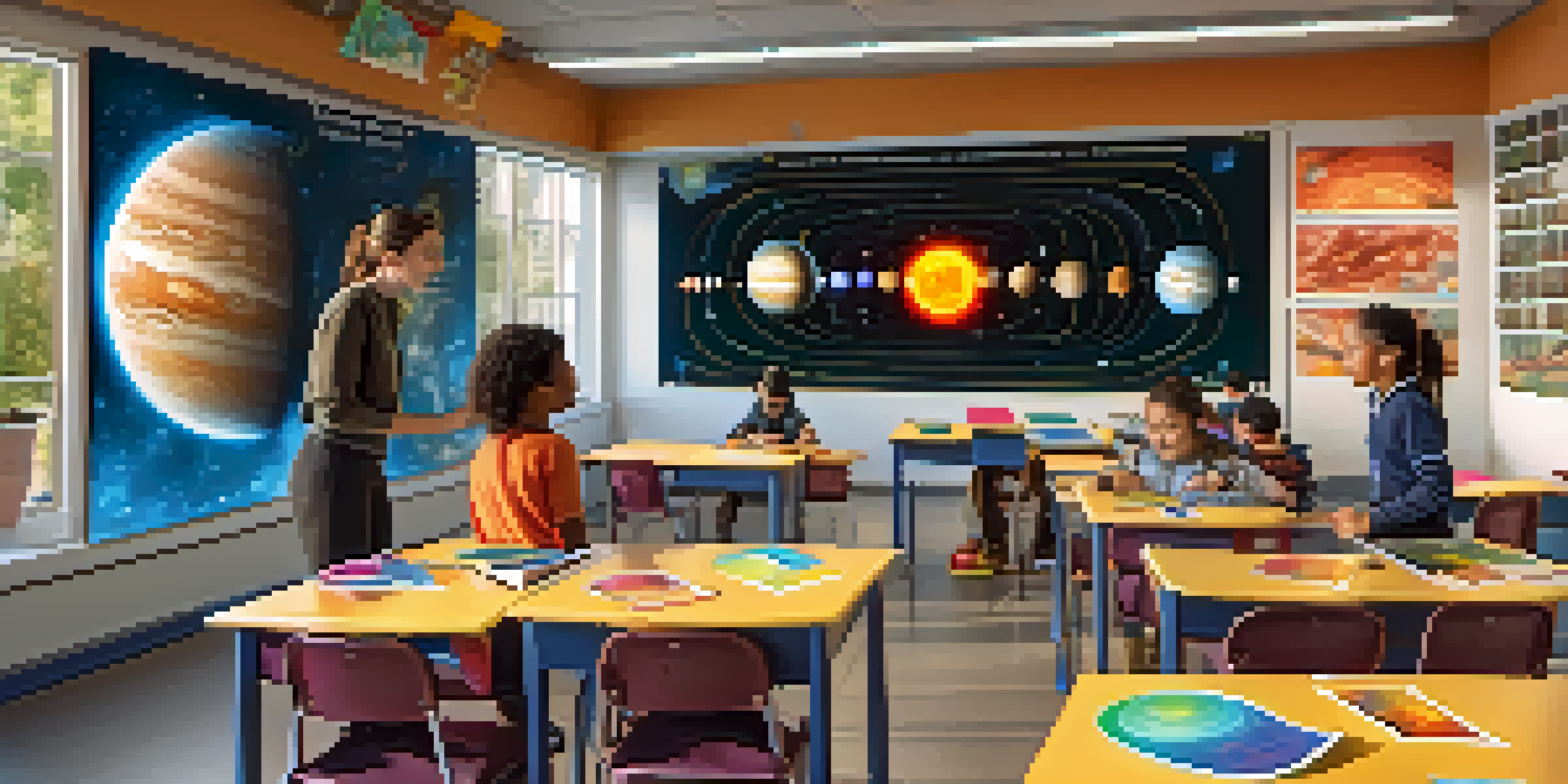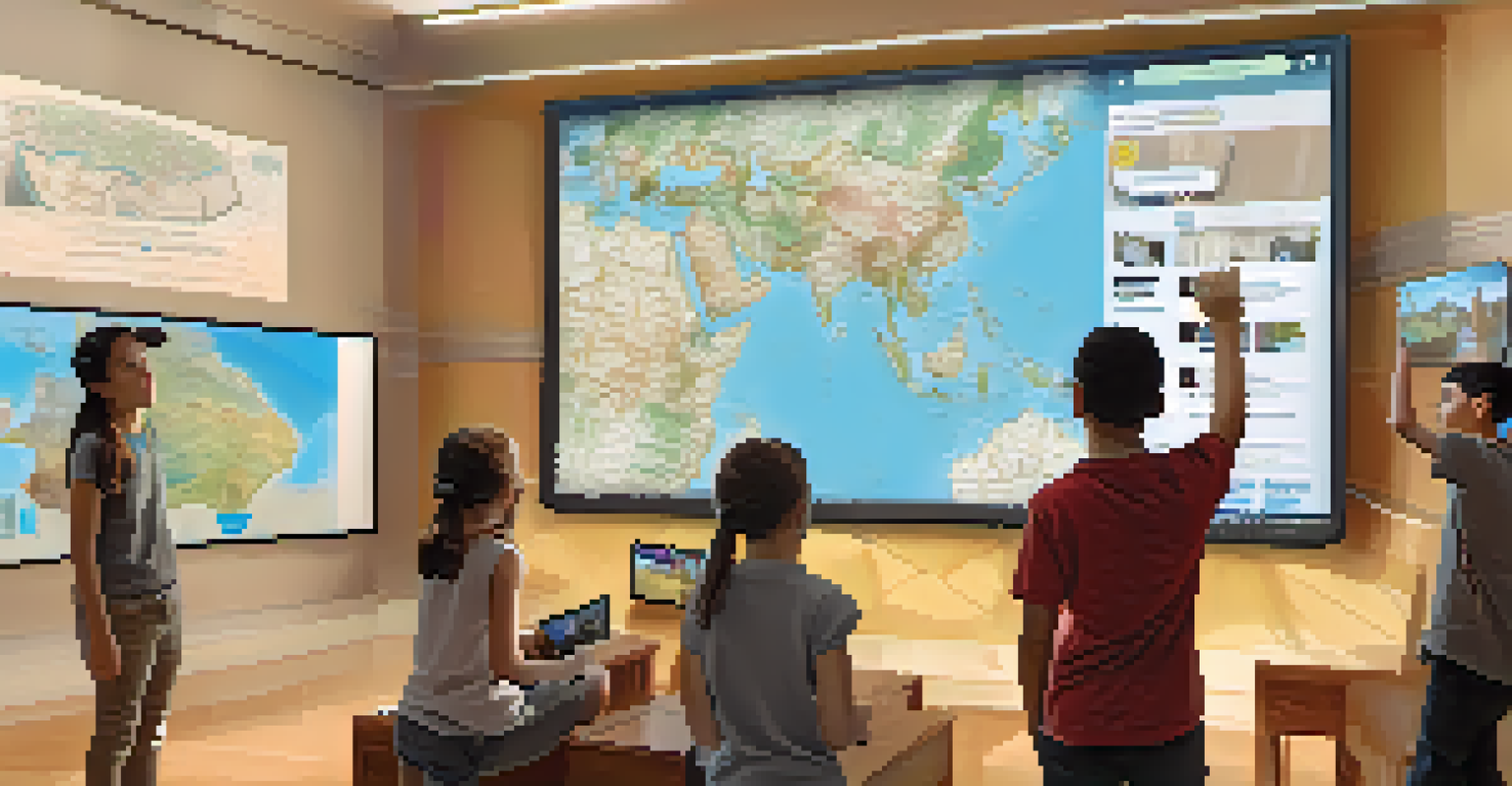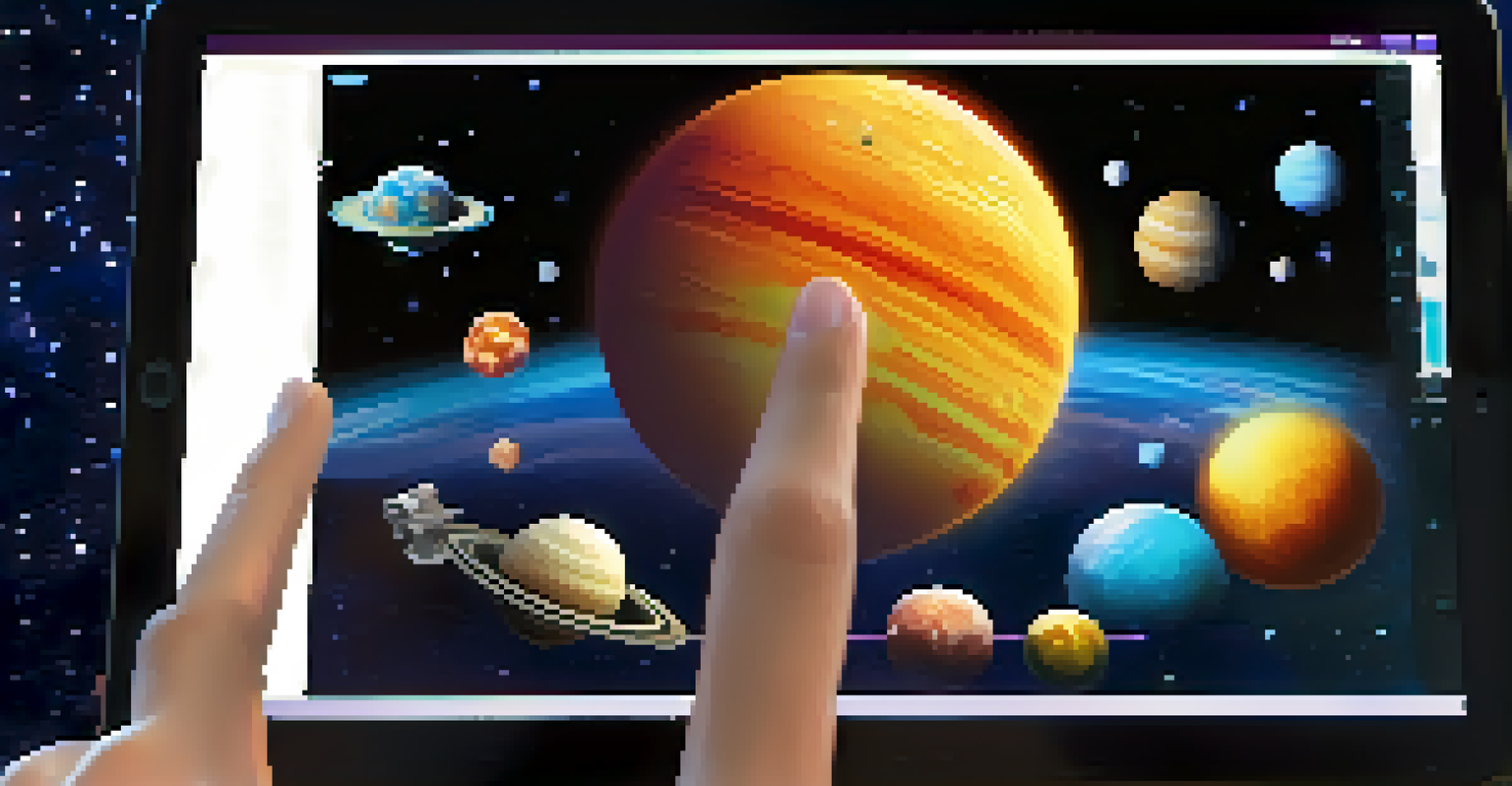Creating AR Learning Experiences for Diverse Learners

Understanding Diverse Learners in Education
Diverse learners encompass a wide range of backgrounds, abilities, and learning styles. Recognizing these differences is crucial for effective teaching. For instance, some students may excel with visual aids while others might prefer hands-on activities. Understanding these nuances allows educators to tailor their approaches, making learning more inclusive and effective.
Education is not the filling of a pail, but the lighting of a fire.
Incorporating diverse perspectives enriches the classroom environment. It fosters a sense of belonging and encourages collaboration among students. When learners see themselves reflected in the curriculum, their engagement and motivation often increase. This can lead to a more dynamic and interactive learning atmosphere.
Ultimately, acknowledging the diversity in learning needs isn’t just beneficial—it’s essential. It helps create a foundation where all students have an opportunity to thrive. By prioritizing inclusivity, educators can pave the way for innovative teaching methods, such as augmented reality (AR).
What is Augmented Reality in Learning?
Augmented reality (AR) blends digital information with the real world, enhancing the learning experience. Imagine a student learning about the solar system and being able to see 3D models of planets right in their classroom. This immersive experience can significantly boost understanding and retention of complex concepts.

AR tools can transform traditional lessons into interactive adventures. For example, history lessons can come alive as students explore ancient civilizations through virtual reconstructions. This not only makes learning enjoyable but also allows for deeper exploration of subjects that may seem distant or challenging.
Diversity Enhances Learning Experience
Recognizing diverse learning styles and backgrounds allows educators to create more inclusive and effective teaching methods.
As technology advances, the accessibility of AR in education continues to grow. With smartphones and tablets becoming commonplace, educators can easily integrate these tools into their teaching practices. This democratization of technology ensures that diverse learners have access to engaging educational experiences.
Benefits of AR for Diverse Learning Needs
One of the standout benefits of AR is its ability to cater to various learning styles. Visual learners may find 3D models particularly helpful, while kinesthetic learners can benefit from interactive simulations. This versatility makes AR a valuable asset in a diverse classroom setting.
The beautiful thing about learning is that no one can take it away from you.
AR can also support learners with disabilities by providing alternative ways to engage with content. For example, students with dyslexia might find text-to-speech features in AR applications helpful. This tailored support ensures that all students can access and understand the material.
Moreover, AR encourages collaboration among students. By working together on AR projects, learners can share their unique perspectives and strengths. This collaborative spirit not only enhances learning but also promotes empathy and understanding among peers.
Creating Effective AR Learning Experiences
To create effective AR experiences, educators should start with clear learning objectives. Understanding what students need to learn will guide the selection of appropriate AR tools and content. This clarity ensures that AR enhances rather than distracts from the learning process.
Next, educators should consider the technology available in their classroom. Not all students may have access to high-end devices, so choosing AR solutions that work on widely available platforms is essential. This approach ensures that every student can participate in the learning experience.
AR Transforms Educational Engagement
Augmented reality (AR) offers immersive and interactive learning experiences that cater to various learning preferences.
Finally, it’s crucial to gather feedback from students. Understanding their experiences with AR can provide valuable insights for future lessons. By iterating on the feedback, educators can continually improve the effectiveness and engagement of AR learning experiences.
Challenges of Implementing AR in Education
While AR offers exciting possibilities, there are challenges to consider. One significant hurdle is the need for adequate training for educators. Without proper training, teachers may feel overwhelmed by the technology, hindering its potential benefits in the classroom.
Moreover, not all students may have access to devices capable of running AR applications. This digital divide can create disparities in learning opportunities. Educators must be mindful of these gaps and seek solutions to ensure equitable access for all students.
Finally, there’s the challenge of integrating AR into existing curricula. Many educators are already strapped for time, making it difficult to weave new technologies into their lesson plans. A thoughtful approach is needed to ensure that AR complements rather than complicates the teaching process.
Case Studies of Successful AR Implementation
Several schools have successfully integrated AR into their curricula with positive results. For example, a middle school in California used AR to enhance its science curriculum. Students engaged with 3D models of the human body, allowing them to explore anatomy in a hands-on way that textbooks alone could not provide.
Another example comes from a high school in New York, where AR was used in history classes. Students could virtually visit historical sites and artifacts, making lessons more engaging and memorable. The success of these programs highlights AR's potential to transform learning experiences.
Challenges in AR Adoption
Implementing AR in education faces hurdles like the need for teacher training and ensuring equitable access to technology for all students.
These case studies serve as inspiration for other educators looking to implement AR in their classrooms. By sharing successes and best practices, teachers can learn from one another and continue to innovate in their teaching methods.
The Future of AR in Education
The future of AR in education looks promising, with advancements in technology paving the way for even more immersive experiences. As AR becomes more sophisticated, we can expect richer, more interactive learning environments. This evolution will likely make learning even more engaging for diverse learners.
Moreover, as educators become more comfortable with AR tools, they will continue to find innovative ways to incorporate them into their teaching. This ongoing exploration will help to create a culture of experimentation within schools, encouraging teachers to push the boundaries of traditional education.

Ultimately, the potential of AR to enhance learning for diverse learners is immense. By fostering inclusivity and engagement, AR can help create a more equitable education system that meets the needs of all students.